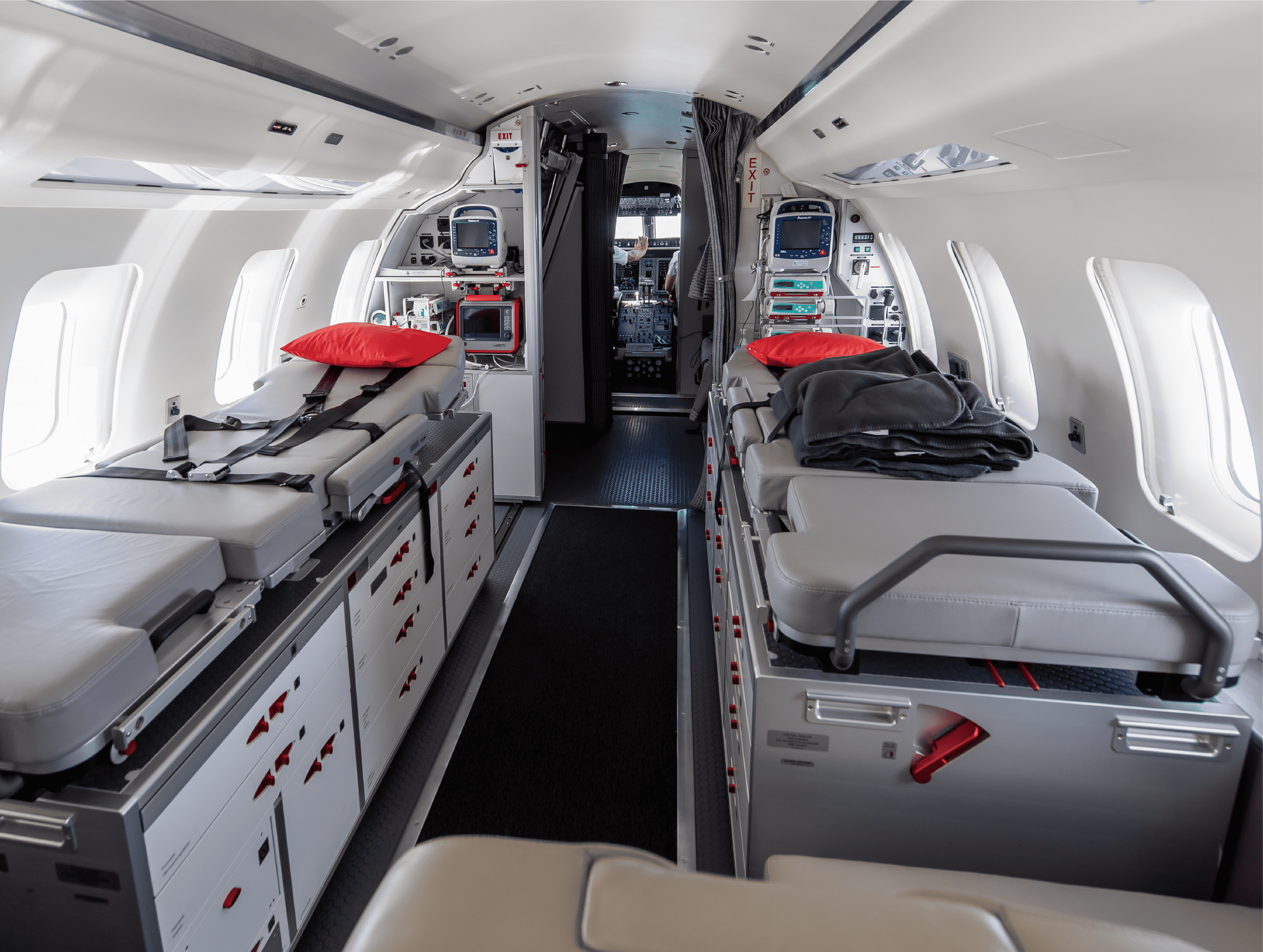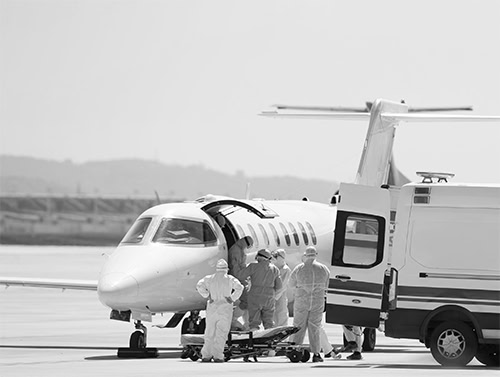Mission Diary 03: The challenge of transferring psychiatric cases
This is the story of how an elderly gentleman with severe psychiatric challenges, including depression, mood disorders, panic attacks, and active treatment, was transferred safely by the Bluedot team from the UAE to India in the face of potential challenges of age, comorbidities and behavioral change.
The nature of the patient’s illness did not permit him to take commercial flights, hence a private charter air ambulance was chosen. During his acute phase of illness, the challenge was increased manifold, due to the claustrophobic environment of the aircraft, the transfer process per-se, and other usual factors which can create panic in the patient.
A detailed discussion with the patient’s family including the family doctors was done as part of the preparation. Every possible intervention was thoroughly discussed with them, starting from simple verbal de-escalation strategy, physical restraints, use of anxiolytics, sedative drugs, etc.
Considering his age and other comorbid conditions, all the complications arising from the use of such medications were also discussed. All necessary steps including airway protection and mechanical ventilation were prepared and kept ready. All his regular medications, including their dosages and timings, were calculated meticulously for safe administration during travel.
On transfer day, the patient was taken to the departing airport along with his family, escorted by a ground ambulance. He needed mild sedation before boarding the aircraft. Onboard the aircraft, he was thoroughly monitored and kept on anxiolytics, and the second dose of sedatives was administered, keeping in mind the dosage limitations, his already administered regular medications, and the chances of respiratory depression. After landing at the destination port, he was safely transported in a pre-arranged ground ambulance with continued support from the medical team.
Most of these patients require only good medical care and common courtesy that other patients require. A few may cause anxiety because of their attitudes or actions. Proper preflight planning is needed in such cases, which includes giving the patient and family accurate information, dealing with their situational anxieties, considering the aeromedical implications of psychotropic medications, anticipating disruptive behavior, and using interpersonal skills to lessen anxiety in flight. The same was followed in this case, which made the transfer an uneventful one.
The image used is representative, as photography is inappropriate on some missions.



